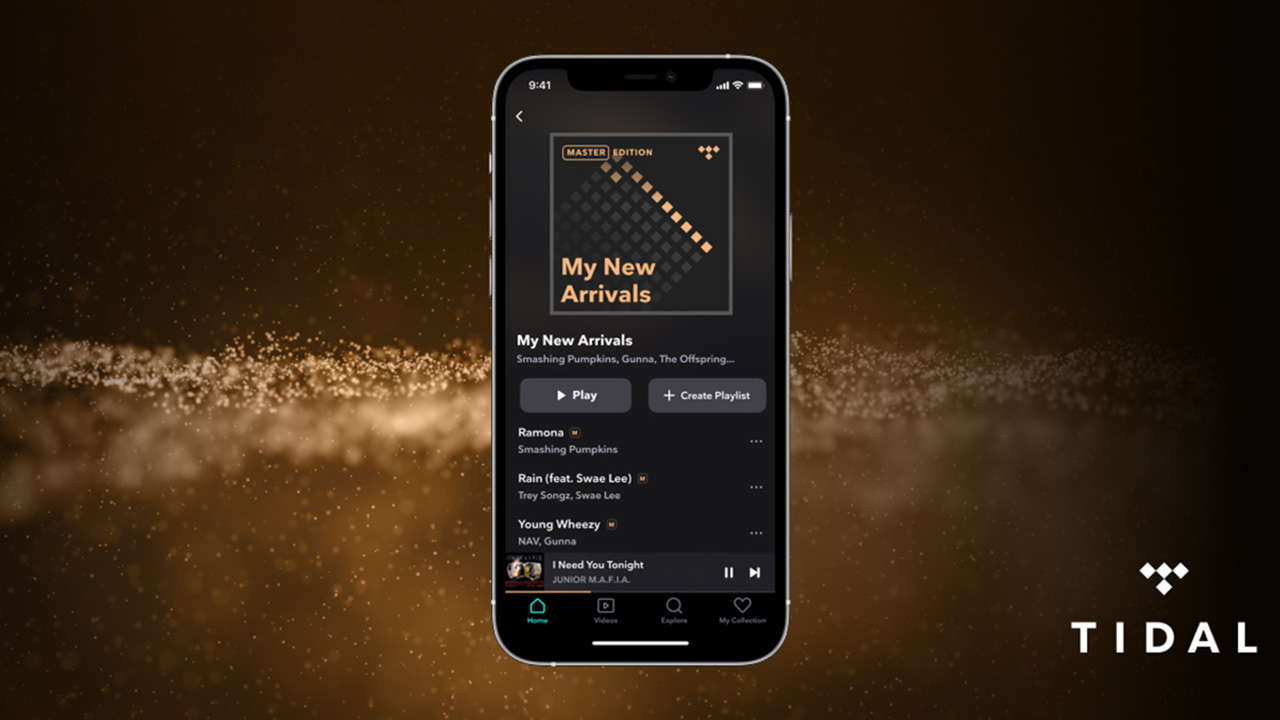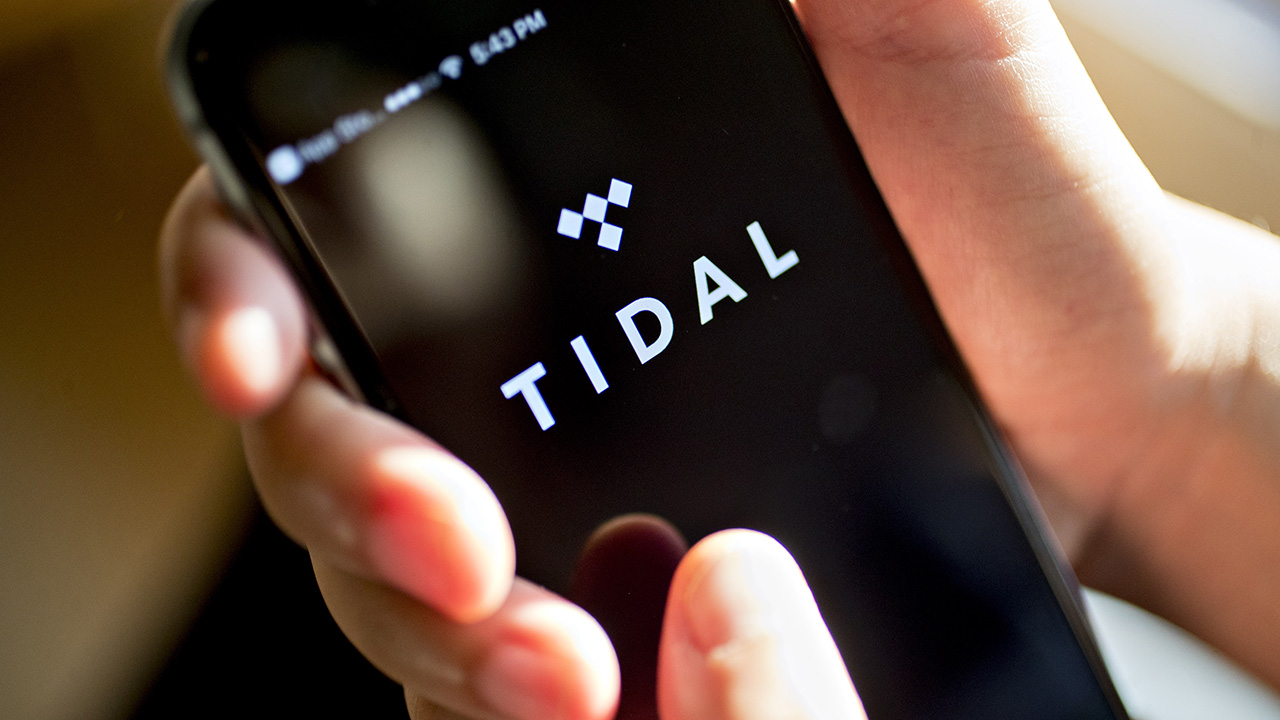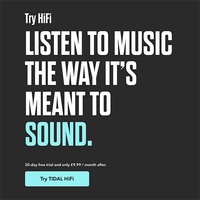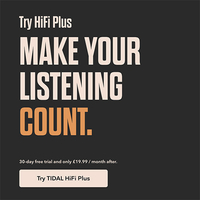Owned by Jay-Z, Tidal is one of the best music streaming services available right now. Subscribe and you'll get 80 million tracks in a variety of lossless audio formats from between 1411 kbps and 9216 kbps, alongside 350,000 videos. But all that said, you’ll pay a price if you want the full enchilada. So is it worth the sub?
And for further info, we also have a Spotify vs Tidal head to head, giving you the lowdown on how both music streaming services compare.
Tidal review: Features

Tidal doesn’t just offer new albums and playlists, there’s a level of smart curation at work here which makes the service incredibly easy to listen to. In addition to the usual recommendations, derived from your listening history, there are powerful music discovery tools that allow you to explore genres and bone up on bios.
Start off with a random Pink Floyd search, and you’ll be served Floyd antecedents such as New York psych rockers The Fugs and their UK equivalents The Deviants. An afternoon on Tidal will make anyone a rock trivia expert as you disappear down the rabbit hole.
Tidal review: User experience
The Tidal catalogue goes toe to toe with its rivals, with plenty of rock, metal, prog and punk just a search bar away.
While the home page invariably leads with tracks we’ve little interest in, you don’t have to scroll far to find things of interest.
A ‘Producers and Songwriters’ rail offers up a playlist of work from creatives you’ve already shown a tendency to like, and this proves really useful. At the moment, my Tidal tab is offering a collection of tracks by Tuomas Holopainen, which in addition to well-known Nightwish anthems, points me in the direction of less known belters from Amorphis and Gregorian too.
There’s also a decent ‘Suggested New Tracks’ selection plus a bunch of ‘Because you listened to…’ recommendations. Unfortunately, the Tidal video tab seems to run independent of your musical preferences, offering generic pop and rap – which is something of a missed opportunity.
The Explore feature is more useful though. You’re encouraged to jump down a specific rabbit hole (we get Metal, Rock/Indie, but no prog or punk) and meander amongst artists and labels.
Tidal review: Audio options
Tidal is a scalable feast when it comes to sonic quality - but be prepared to pay a premium if you want sonic superiority.
Stick to the basic $9.99/£9.99 Tidal HiFi tier, and you'll be able to access lossless audio format and high quality sound up to 1411 kbps. For many, this will be good enough, and you still get access to Tidal’s cool music Discovery features.
But invest in Tidal HiFi Plus at $19.99/£19.99 per month and things get a bit more interesting. Open this door and you'll be greeted by immersive audio formats including MQA, Dolby Atmos, Sony 360 Reality Audio, and HiFi up to up to 9216 kbps, which does provide a beautiful listening experience.
MQA is an advanced audio format that’s often described as musical origami. An MQA file can stream on low bandwidth, but unfolds to reveal additional detail and greater dynamics when it lands, a welcome reward if you own high quality hi-res audio headphones or stream to a Hi-Fi system. The very best MQA files are like getting a foot in the door of a recording studio.
You can spot MQA encoded albums by the Master logo beneath the artist listing.
And as for Dolby Atmos 3D cinema-style sound, run the Tidal app on an Android smart TV, or media player like Amazon’s Fire TV streaming stick, and if you’re on the HiFi tier and own a Dolby Atmos sound system, you’ll be able to rock out in the round.
The Atmos playlist ‘Classic Rock Classics’ is arguably worth the price of a sub alone. The Ramones Blitzkrieg Bop coming at you from all angles is the nearest you’ll get to reliving a night at CBGBs, while Sum 41’s In Too Deep is 360 degree skateboard punk nirvana.
Tidal review: Benefits for artists
Tidal recently unveiled their Direct Artist Payout plan which sees 10% of your HiFi Plus subscription going directly to the artists you listen to most, while the new Fan-Centered Royalties initiative is based on “actual streaming activity of fans vs. the industry accepted method of aggregating streams and allocating it to the most popular artists," according to Tidal.
This new way of paying artists is due to come into effect from January 2022 and subscribers will start to see their streams add up in their activity feed as soon as the service kicks in. This is a move away from some other payment plans and could cause a shift in the streaming industry.
Tidal review: The alternatives
If you want Hi-Res Audio for less than what Tidal charge, then high tail it over to Qobuz. It’s our favourite, best value Hi-Res Audio service. The Qobuz Studio Premier plan is just £15 a month but offers 24-bit hi-res with a comparable catalogue to Tidal. There’s no shortage of rock, metal or prog, although it doesn’t have the same editorialised curation as Tidal
If Hi-Res Audio isn’t yet a luxury you need to afford, Spotify comes highly recommended. It’s widely supported on everything from Sonos multiroom kit to Sky Q telly boxes, and increasingly has a well-integrated podcast catalogue.
Related guides
- Best music streaming services: How do they compare?
- Spotify review: We examine the popular streaming service
- Spotify vs Tidal: Which music service is best for you?
- Apple Music vs Amazon Music Unlimited: We put them head to head
- Apple Music review: Can Apple take a bite out of the competition?
- Is lossless audio streaming worth it?



